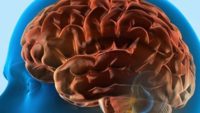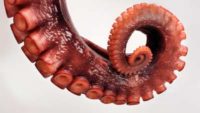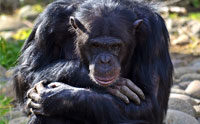The thinking behind the existence of old objects close to Earth. …read more Read more here: creation.com
Design in nature could not be more obvious, but it’s a mountain too high to climb for some. …read more Read more here: creation.com
Even secular scientists can’t agree on what age to assign one of the world’s most magnificent geological features. …read more Read more here: creation.com
By Callie Joubert Researchers using neuroimaging technology claim to have found the cause for the conflict between science and religion (evolution and creationism) in the brain. …read more Read more here: AIG Daily
By Change Tan This paper argues that the issue with the origin of life and the origin of biodiversity is not an issue of time, though deep time is problematical. …read more Read more here: AIG Daily
In August of 2009, the Institute for Creation Research reported that UK paleontologists found intact ink sacs within squid fossils.1 The ink appeared largely unaltered, and the scientists used it to draw a picture of how the extinct squid variety would have appeared in real life. Now, a new team of researchers, publishing in the Proceedings of the National Academy of Sciences, reports that the ink is almost an exact match with modern cuttlefish ink. The age implications of this find are clearer now than ever. These researchers subjected the fossil squid ink from two samples to eight different tests [More]
By Dr. Nathaniel T. Jeanson Careful reexamination of the first two chapters of Darwin’s seminal work, On the Origin of Species, leads to a surprising conclusion. …read more Read more here: AIG Daily
Great photographers pair a select lens to a sophisticated camera and then adjust shutter speed and aperture size to capture the perfect photo. Our eyes perform similar tasks but are precisely engineered better than any camera—and their components are vastly more sophisticated. Could the seeing eye have been made by time and chance? More… …read more Read more here: icr.org
And do various biblical miracles have the same problem? …read more Read more here: creation.com
By Dr. Tommy Mitchell When does human life begin? This question has confounded individuals and divided our society. …read more Read more here: AIG Daily
By Devon Spencer, DVM Animals can show up in the oddest places and make evolutionists scratch their heads as is the case with the newly discovered monkey fossils. …read more Read more here: AIG Daily
Each tiny scale on a blue morpho’s wing has neat lines of ‘Christmas Trees’, which ‘trip the light fantastic’. …read more Read more here: creation.com
By Dr. Elizabeth Mitchell Evolutionists hope the first chiral molecule discovered in interstellar space will shed light on the mystery of how life evolved its biochemical handedness. …read more Read more here: AIG Daily
A recent U.S. Forest Service study estimated that the trees planted along California streets provide a billion dollars’ worth of human benefit each year. And that benefit comes cheap. This analysis reveals five tree-related benefits that identify where trees fit in the origins controversy. More… …read more Read more here: icr.org
By Dr. Nathaniel T. Jeanson Today’s species are the link between the past and the present. The genetics of the species around us today contain the echo of the Ark. …read more Read more here: AIG Daily
By Dr. Andrew A. Snelling At today’s rate of ocean-floor buildup, chalk layers would take millions of years to form. How do creationists explain them? …read more Read more here: AIG Daily
Geologists struggle to explain how features such as mountain ranges and plains formed by a slow-and-gradual process and ignore evidences that point to a global flood. …read more Read more here: creation.com
The amazing ability of birds to achieve ape-level cognitive traits—and in some cases exceed them like when they emulate human speech—has long confounded the evolutionary paradigm that claims humans evolved from apes. Now the bird intelligence evolutionary quandary has worsened as described in a new research report that shows bird brains contain over twice as many neurons per unit area as ape brains. More… …read more Read more here: icr.org
By Dr. Joe Francis Rusty old iron is toxic to our bodies. Yet God designed all living things to depend on a steady supply of iron to continue living. …read more Read more here: AIG Daily
By Dr. Danny R. Faulkner To the Christian, God’s word is the ultimate, unchanging authority, and so we can rely upon it for answers for many things, such as the age of the universe. …read more Read more here: AIG Daily
After investing so much time and effort to understand how all parts of the human body interact, scientists keep turning up new and unforeseen connections—often when they ask the right questions. New and strange developments inspired a team to ask wacky questions about a unique white blood cell called Ly6Chi. And they found some profound answers. More… …read more Read more here: icr.org
How the cataclysm of Noah’s Flood explains it. …read more Read more here: creation.com
The concept that horizontal gene transfer explains shared genes among unrelated taxon is being challenged by a solar-powered sea creature. …read more Read more here: creation.com
Australia’s Tasmanian ‘tiger’ is a puzzle for evolutionists so they usually classify it as a separate biological family. …read more Read more here: creation.com
By Heather Brinson Bruce How’d you like to think with your arms? Ask the smartest invertebrate on the planet! …read more Read more here: AIG Daily
As genetic research moves forward, the similarity between humans and chimpanzees becomes more and more distant—well beyond the bounds of evolutionary probability. But the secular world appears determined to show how chimps can behave similar to humans to bolster the failing evolutionary story. The most recent media buzz centers on several articles in which chimps are shown grieving over their dearly departed comrades. More… …read more Read more here: icr.org
By Dr. Danny R. Faulkner Does the nuclear source of the sun indicate that the sun is billions of years old? Not at all. …read more Read more here: AIG Daily












































